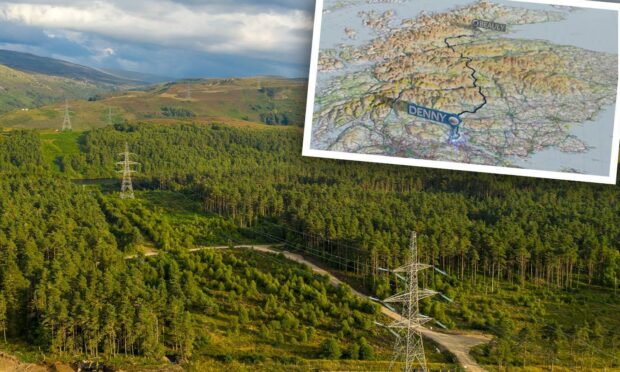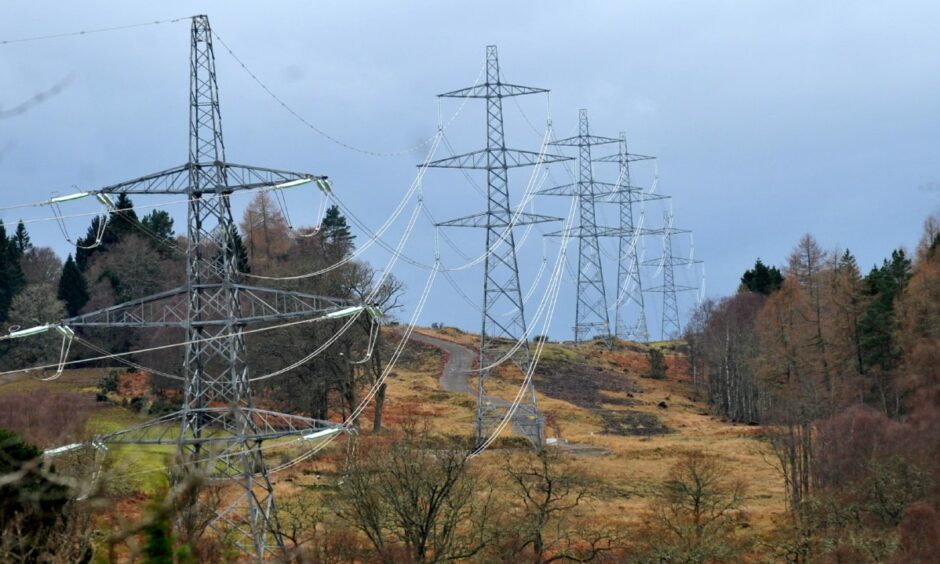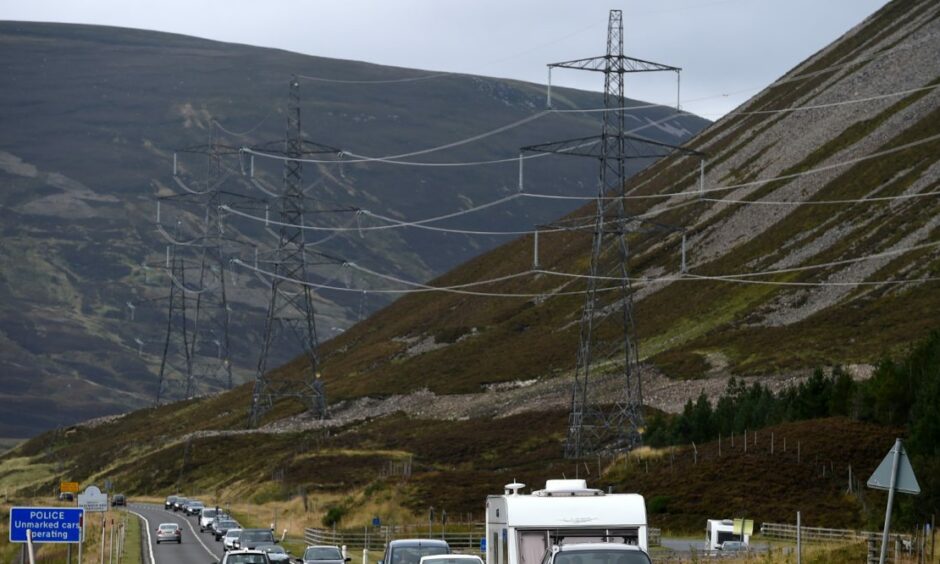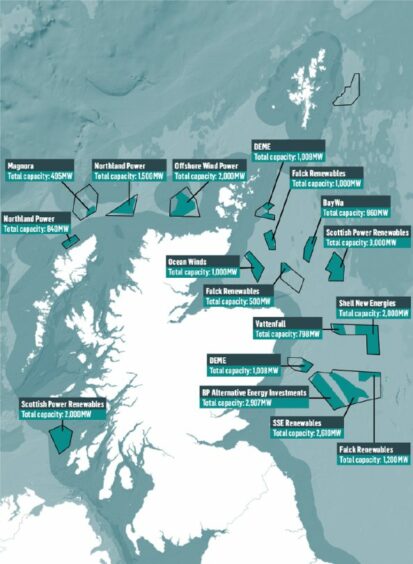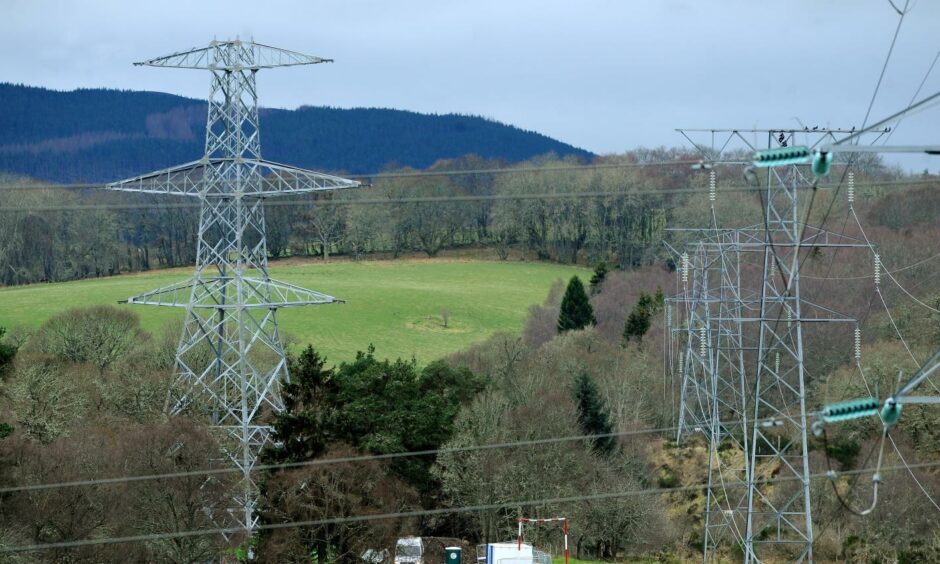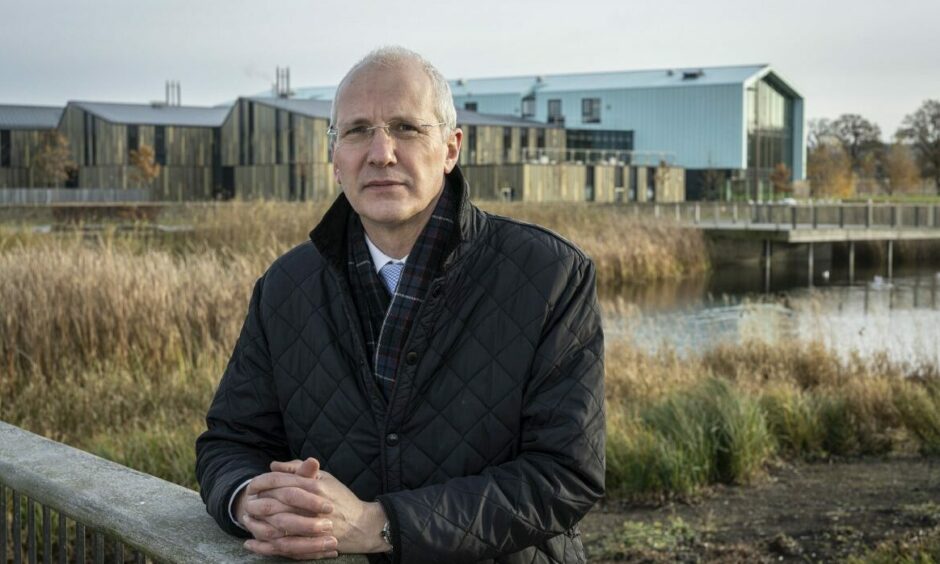A critical piece of infrastructure, or an unnecessary scar on the landscape?
The upgraded power line stretching 137 miles from Beauly to Denny near Falkirk still divides opinion.
Fifteen years ago, on February 6 2007, an inquiry opened into the proposal, outlining the development-versus-environment battle raging around it.
Scotland’s longest and most expensive public inquiry
By the time it closed 11 months later it heard 300 witnesses over 105 days in Inverness, Newtonmore, Perth and Stirling.
It also dealt with 17,295 objections to the plans for a 400,000-volt overhead electricity transmission line to replace the existing 132,000-volt line.
At the time it was Scotland’s longest and most expensive public inquiry, costing an estimated £10m.
The line was proposed by Scottish Hydro Electric Transmission, a subsidiary of Scottish & Southern Energy (SSE), and SP Transmission, a subsidiary of Scottish Power.
Supporters said it was crucial for the future of the renewables industry in Scotland.
They argued the increased capacity was needed to take power from wind farms and other green energy developments in the Highlands and Islands to markets in the south.
Opponents called it an “unnecessary act of vandalism” and likened its impact on the Highland landscape to taking a razor blade to a Rembrandt.
Approval was given in 2010 and the line became fully operational in 2015. The upgrade is said to have supported more than 2,000 jobs.
Environmental campaigner Dave Morris, former director of Ramblers Scotland, says the line should never have been built.
‘Future is offshore wind’
He points to the recent ScotWind auction which gave 17 projects, with combined capacity of 25 gigawatts (GW), option agreements for areas of seabed.
He said: “We argued against Beauly-Denny saying that what was really needed in Scotland were subsea cables because the future was going to be offshore wind farms.
“That is blatantly obvious now.
“So I think the power line should never have been built, along with the large wind farms that have been sprouting up all over the hills.”
The power line should never have been built, along with the large wind farms that have been sprouting up all over the hills.”
Dave Morris
Mr Morris believes building the line was to the short-term commercial benefit of the large energy companies.
He added: “It generated a lot of work for them and gave an opening to build more and more onshore wind farms.”
Ramblers Scotland was part of the Beauly Denny Landscape Group with the John Muir Trust (JMT) and National Trust for Scotland (NTS).
Objectors also included Highland, Stirling, Falkirk, Perth and Kinross and Clackmannanshire councils, and the Cairngorms National Park Authority (CNPA).
Among complaints at the inquiry were that an alternative route was not considered. Nor was burying part of the line.
SSE said undergrounding would increase costs by 15-26%.
JMT head of policy Mike Daniels believes there are still questions about the Beauly-Denny line 15 years on.
He said: “We’ve been thinking about the consequences ever since.
“No one can deny there has been an impact on the landscape. Some would say it has disfigured the countryside.
Objections have come ‘home to roost’
He said the building of the line led to a wave of applications for large-scale onshore wind farms, including some “inappropriate” developments.
The emphasis has now changed to offshore wind.
“In future we may wonder if Beauly-Denny was a white elephant,” Mr Daniels added.
He believes if the inquiry was held now more consideration would be given to measures such as undergrounding cables.
Diarmid Hearns, NTS head of public policy, believes the inquiry led to greater sensitivity from developers and government to start discussions earlier and provide more options.
He said: “There is a wider recognition that our most sensitive landscapes require greater care.
“For example, the current National Planning Framework has no onshore wind in National Scenic Areas or national parks.
“However, tensions remain with smaller-scale developments, including additional or upgraded transmission lines, many of which will go near populated areas.
“The expected repowering of onshore wind farms with much taller turbines, and possibly new developments, will see this brought back into focus.”
Beauly-Denny ‘helped open up north of Scotland’
An SP Energy Networks spokeswoman said Scotland has seen its renewable electricity capacity more than quadruple since 2007.
She said: “This has, in large part, been thanks to investments in infrastructure like the Beauly to Denny transmission line.
“The line helped open up the north of Scotland and bring about the renewable revolution that much of the country has benefited from, bringing jobs and benefits to a number of communities.”
Line has triggered a ‘renewables revolution’
SSEN Transmission says it is proud of the “significant contribution” Beauly-Denny plays in Scotland’s energy system and its “undeniable positive legacy”.
A spokesman said: “The Beauly-Denny line was the first and most critical piece of a jigsaw which is still coming together today as we continue to renew and reinforce the electricity transmission network in the north of Scotland and deliver a network for net zero emissions.”
He said the energisation of the line in 2015 enabled a “modern day renewables revolution”.
He argues infrastructure, such as the Beauly-Denny line, will continue to play a critical role in meeting energy needs working towards net zero emissions.
A Scottish Government spokesman said the power line has helped transform Scotland’s electricity system.
He said: “It, alongside other major projects like the Caithness-Moray has enabled installed capacity of renewables in Scotland to grow from 7.4GW in 2015 to 12GW today.”
He said Scotland has some of the most stringent environmental impact regulations in the world.
Planning authorities are primarily responsible for enforcement of planning control and the government does not hold information on alleged individual breaches.
‘Line was instrumental in growth of renewable energy’
Highlands and Islands Enterprise (HIE) welcomed the line’s approval at the time.
Current chief executive Stuart Black said it has been instrumental in the growth of renewable energy in the Highlands and Islands.
He said: “Without it, we simply wouldn’t have the industry we have, nor the economic and community benefits that stem from it.”
But Mr Black said early engagement with stakeholders is crucial, as is taking account of different interests and impacts and applying appropriate and effective mitigation.
